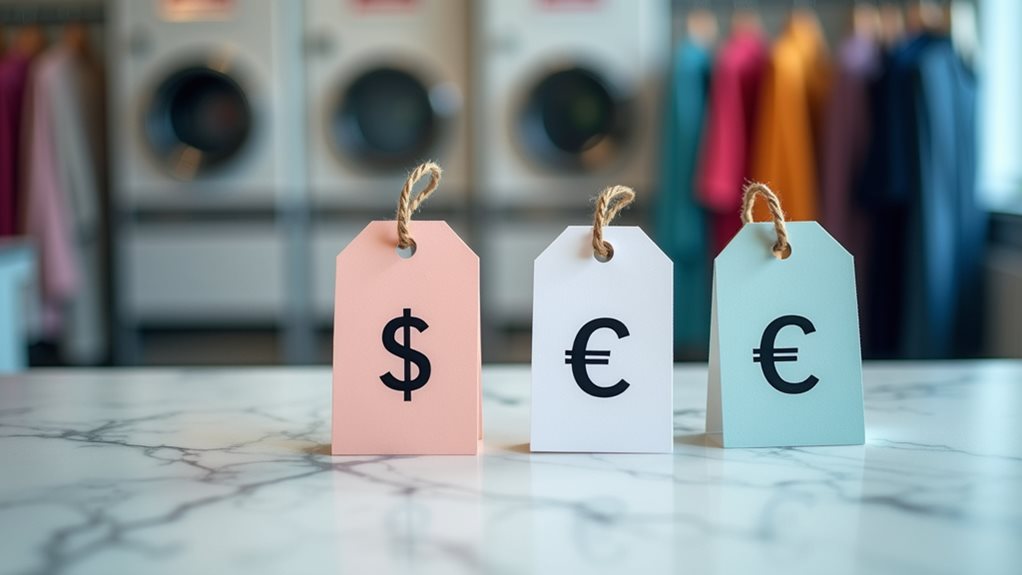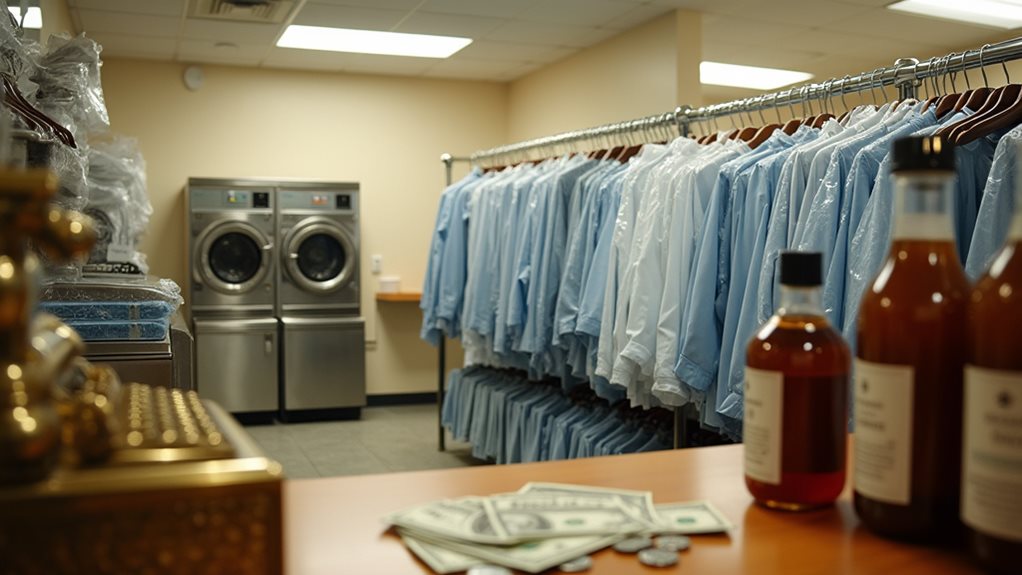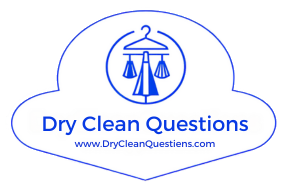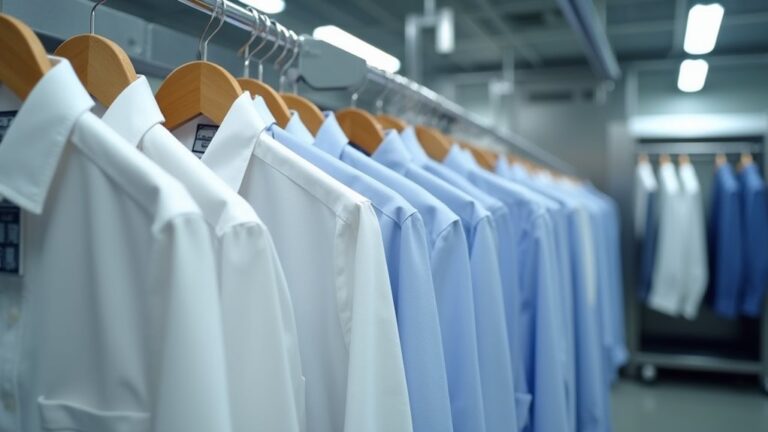Dry cleaning can definitely feel expensive when you’re paying $6-12 for pants or $14-26 for suits, but there’s more behind those prices than meets the eye. You’re paying for specialized equipment that costs $15,000+ upfront, skilled technicians who handle delicate fabrics, expensive chemicals, and strict environmental regulations that add operational costs. While a $15 dress shirt might sting your wallet, understanding these hidden factors—plus knowing smart alternatives like spot cleaning and bulk discounts—can help you steer through the world of garment care more strategically.
Understanding the True Cost of Dry Cleaning Services
The sticker shock of dry cleaning bills can feel like a punch to the wallet, especially when you’re standing at the counter wondering how three shirts and a blazer somehow cost more than your lunch budget for the week.
Here’s what drives those dry cleaning prices: your garment care needs vary dramatically based on what you’re cleaning, and the cost to dry clean reflects that complexity. Basic dress shirts might run $3-8 each, while delicate fabrics like silk demand premium pricing due to specialized handling.
Professional cleaning isn’t just about tossing clothes in a machine—it requires expertise, chemicals, and equipment that justify the investment. Factor in additional services like stain removal or pressing, and your overall cost climbs quickly, but you’re paying for preservation of your wardrobe’s longevity.
Location plays a significant role in pricing, with Manhattan cleaners typically charging more than those in outer boroughs due to higher rent and operating expenses.
Breaking Down Dry Cleaning Prices by Garment Type

When you’re staring at that dry cleaning price list, wondering why your favorite blazer costs more than your jeans, understanding the garment hierarchy can save you from future sticker shock and help you budget wisely.
Understanding the garment hierarchy at your dry cleaner can save you from future sticker shock and help you budget wisely.
The price of dry cleaning follows a pretty logical pattern once you decode it. Your everyday dress shirts fall into the budget-friendly category at $2.99 to $8.00, while pants bump up to $6.00-$11.99 range.
Formal dresses require special care and handling, pushing costs to $13.25-$19.99, but wedding dresses? That’s where things get serious at $199.99-$379.99.
Suits land somewhere in the middle at $14.99-$25.95, reflecting their complexity.
Items requiring stain removal or made from delicate fabrics will typically command higher prices due to the specialized attention and techniques needed to properly care for these challenging materials.
Hidden Factors That Drive Up Dry Cleaning Expenses

You might think the price tag on your dry cleaning receipt reflects just the cleaning itself, but there’s actually a whole world of hidden expenses working behind the scenes that you probably never considered.
When I first learned that a single dry cleaning machine can cost up to $2,000 annually just to maintain—not even counting the initial purchase—I finally understood why my favorite blazer wasn’t getting any cheaper to clean 😅.
The reality is that dry cleaners face mounting costs from specialized equipment upkeep, strict chemical disposal regulations that come with hefty fees, and the need for skilled technicians who can handle your delicate fabrics without turning them into expensive mistakes.
These operational pressures are just part of why dry cleaning businesses require such substantial startup costs, with initial investments typically ranging from $200,000 to $500,000 to get off the ground.
Equipment and Maintenance Costs
Behind every pristine suit and perfectly pressed dress lies a complex web of machinery costs that most people never consider, and honestly, I didn’t think about it either until my neighbor Sarah opened her dry cleaning business and shared some eye-opening numbers with me over coffee ☕.
Those dry cleaning machines? They’ll set you back thousands upfront, then demand $500 to $2,000 annually in maintenance costs per machine.
When specialized replacement parts break down, you’re looking at premium prices for unique components.
Energy consumption alone greatly impacts service pricing, while mandatory upgrades for environmental standards add even more operational costs.
Commercial dry cleaning equipment typically starts at around $15,000 for basic models, though high-end industrial units can exceed $100,000.
Sarah’s lesson hit home: equipment expenses aren’t just business problems—they’re directly reflected in what you pay.
Chemical Disposal Regulations
Sarah’s equipment headaches were just the beginning, because I learned that the real financial nightmare lurks in something most customers never see: the strict regulations governing how dry cleaners dispose of those powerful chemical solvents.
You wouldn’t believe the maze of chemical disposal regulations that businesses must maneuver through – it’s like trying to solve a Rubik’s cube blindfolded!
Those hazardous solvents like perchloroethylene can’t just go down the drain, and environmental regulations demand specialized waste disposal systems that seriously impact operational expenses.
The compliance costs are staggering, from mandatory safety training to expensive recycling solvents processes that require labor-intensive distillation methods.
When cleaners face potential hefty fines for violations, they’ve got no choice but to pass these operational expenses onto service prices.
Many facilities are now switching to safer alternatives like wet cleaning and liquid CO2 to reduce both health risks and regulatory compliance costs.
Skilled Labor Requirements
When I started digging deeper into why my dry cleaning bills felt like mini mortgage payments, I discovered that skilled labor requirements create a surprisingly hefty expense that most of us never consider.
You’re not merely paying for someone to toss your clothes in a machine – you’re investing in genuine expertise that comes with higher wages and extensive operational expenses.
These technicians spend years mastering the delicate art of treating complex stains without destroying your favorite silk blouse, and their hand-cleaning techniques for delicate fabrics require incredible precision.
When you demand those lightning-fast turnaround times for your last-minute date outfit, you’re fundamentally paying premium rates for skilled labor that can work miracles under pressure while maintaining quality standards.
These labor costs directly impact the business’s bottom line, as dry cleaning operations typically maintain profit margins of only 15-25%, meaning much of what you pay goes toward compensating the skilled professionals handling your garments.
Comparing Dry Cleaning Costs Across Different Markets

Although you might assume dry cleaning prices stay fairly consistent everywhere, the reality is that your location dramatically affects what you’ll pay, and I learned this the hard way during a cross-country move last year.
Moving from small-town Ohio to Manhattan, I watched my dry cleaning price jump from $3 per dress shirt to nearly $8 overnight 😅.
Geographic areas with higher living costs inevitably translate to steeper cleaning bills, as local dry cleaners face increased rent and labor expenses.
The cost of dry cleaning varies wildly between markets, with garment types showing different average costs depending on competitive pricing in each area.
Shopping around becomes essential, especially in urban environments where you’ll find notable price differences within just a few blocks.
Beyond location, the type of establishment you choose makes a significant difference, as budget chain cleaners typically charge much less than high-end specialty services that offer premium care and additional amenities.
Cost-Effective Alternatives to Traditional Dry Cleaning

Before you resign yourself to those hefty dry cleaning services bills, let me share some game-changing alternatives I’ve discovered that can slash your garment care costs without sacrificing quality.
I’ve learned that many “dry clean only” delicate fabrics actually survive gentle hand washing—who knew my silk blouse could handle a careful sink rinse? 😊
Spot cleaning with simple home remedies tackles most stains before they require professional intervention, while wash and fold services at $1.99 per pound beat traditional cleaning for everyday items.
Renting formal wear for special occasions eliminates cleaning costs entirely, and bulk cleaning services offer considerable per-item discounts.
Steaming provides an excellent chemical-free alternative that refreshes garments without the expense and solvent exposure of traditional dry cleaning.
These cost-effective alternatives have transformed my approach to maintaining a polished wardrobe without breaking the bank.
Smart Strategies to Reduce Your Dry Cleaning Bills

Since discovering these practical money-saving tactics, I’ve managed to cut my dry cleaning expenses by nearly 60% without compromising the crisp, professional appearance my wardrobe demands.
You’ll want to become selective about which garments actually need professional attention—that silk blouse doesn’t require cleaning after one wear, trust me.
Bundle your items together since services often come with bulk discounts that’ll make your wallet happier.
I’ve learned to scout local dry cleaner promotions religiously; seasonal sales can slash costs dramatically.
Master spot-cleaning techniques at home to reduce the overall frequency of professional visits, and don’t shy away from comparing prices around town—I was shocked to discover my neighborhood cleaner charged 40% less than my usual spot!
Understanding that most Americans spend between $200 to $500 annually on professional garment care will help you set realistic budget expectations and evaluate whether your current spending aligns with national averages.
Quality Vs Price: Getting the Best Value for Your Money

While those money-saving strategies will definitely protect your budget, the real challenge lies in figuring out whether you’re getting quality service that justifies what you’re paying, because I’ve learned the hard way that the most expensive dry cleaner in town isn’t necessarily the best one.
Here’s what surprised me: during my investigation, higher-priced cleaners didn’t consistently outperform budget options in stain removal effectiveness. The cleaning process quality often depends more on the technician’s skill than the price you’re charged.
Focus on finding cleaners who follow proper care instructions, especially for garments that require special care. Look for cleaners who use chemical solvents properly to remove stains and dirt from delicate fabrics without causing damage to your valuable clothing items.




